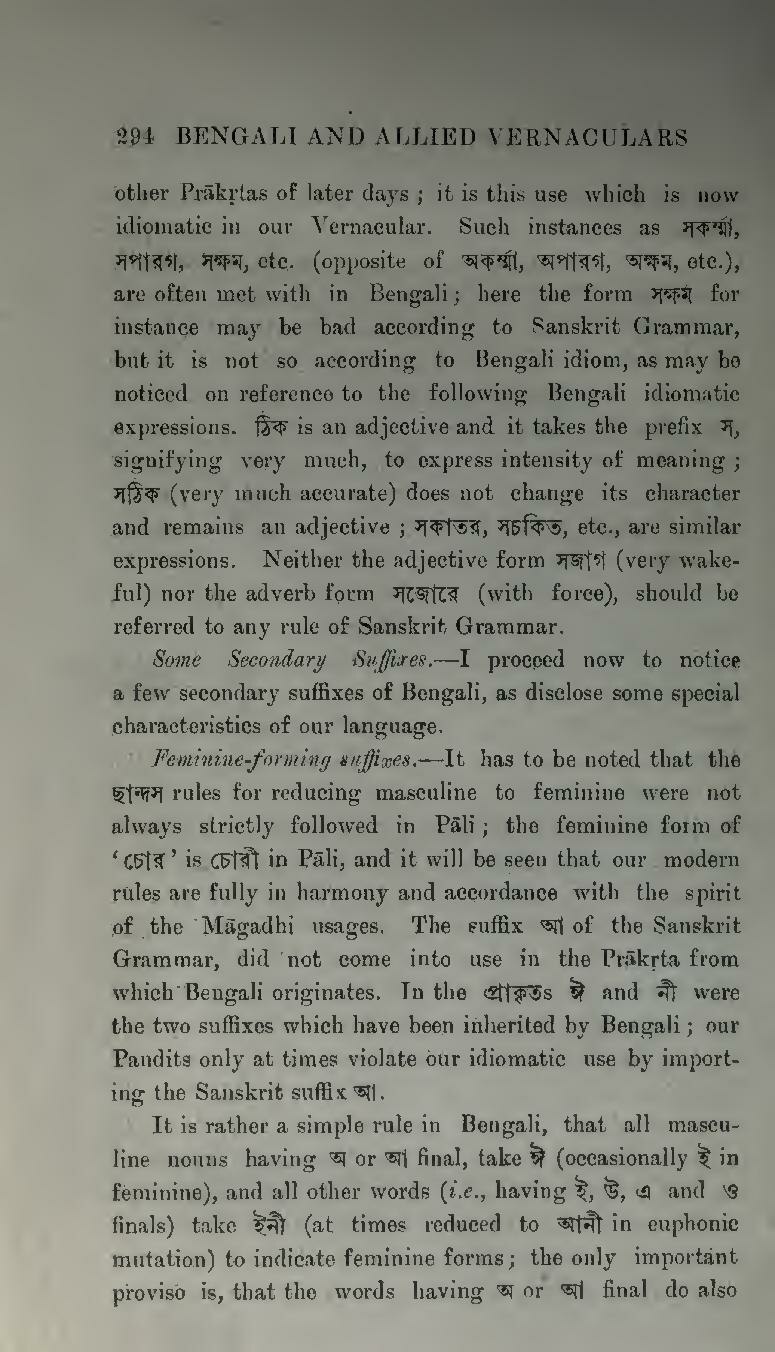other Prākṛtas of later days; it is this use which is now idiomatic in our Vernacular. Such instances as সকর্ম্মা, সপারগ, সক্ষম, etc, (opposite of অকর্ম্মা, অপারগ, অক্ষম, etc.), are often met with in Bengali; here the form সক্ষম for instance may be bad according to Sanskrit Grammar, but it is not so according to Bengali idiom, as may be noticed on reference to the following Bengali idiomatic expressions. ঠিক is an adjective and it takes the prefix স, signifying very much, to express intensity of meaning; সঠিক (very much accurate) does not change its character and remains an adjective; সকাতর, সচকিত, etc., are similar expressions. Neither the adjective form সজাগ (very wakeful) nor the adverb form সজোরে (with force), should be referred to any rule of Sanskrit Grammar.
Some Secondary Suffixes.—I proceed now to notice a few secondary suffixes of Bengali, as disclose some special characteristics of our language.
Feminine-forming suffixes.—It has to be noted that the ছান্দস rules for reducing masculine to feminine were not always strictly followed in Pāli; the feminine form of 'চোর' is চোরী in Pāli, and it will be seen that our modern rules are fully in harmony and accordance with the spirit of the Māgadhi usages. The suffix আ of the Sanskrit Grammar, did not come into use in the Prākṛta from which Bengali originates. In the প্রাকৃতs ঈ and নী were the two suffixes which have been inherited by Bengali; our Pandits only at times violate our idiomatic use by importing the Sanskrit suffix আ.
It is rather a simple rule in Bengali, that all masculine nouns having অ or আ final, take ঈ (occasionally ই in feminine), and all other words (i.e., having ই, উ, এ and ও finals) take ইনী (at times reduced to আনী in euphonic mutation) to indicate feminine forms; the only important proviso is, that the words having অ or আ final do also
